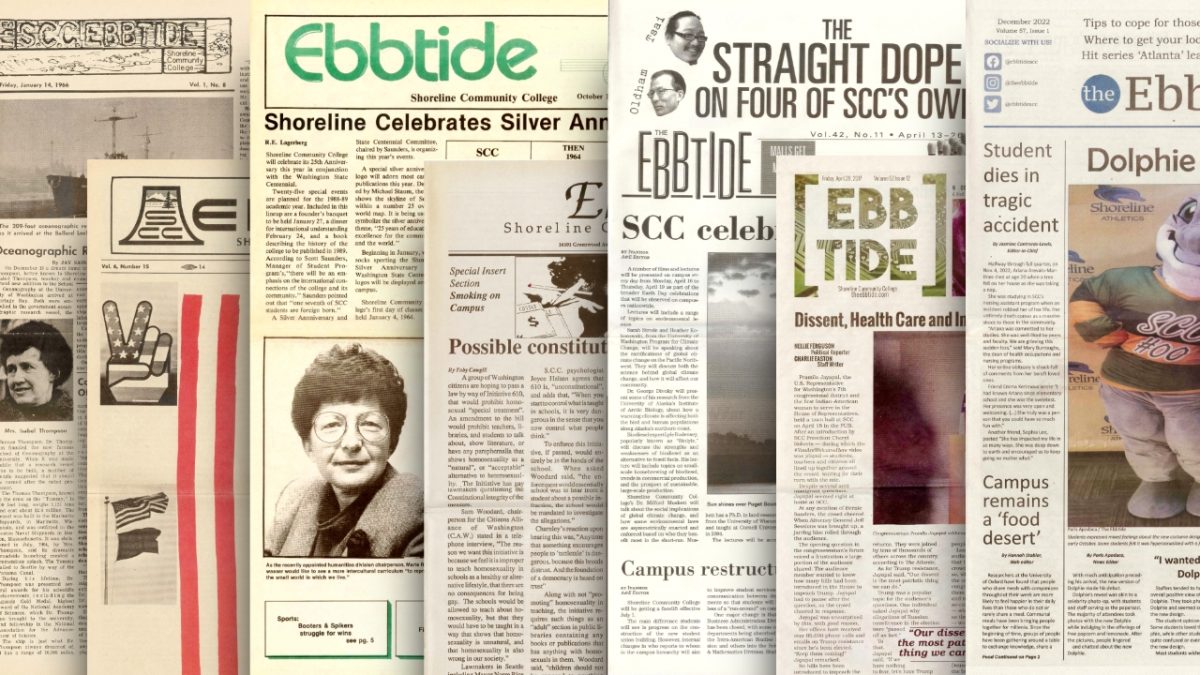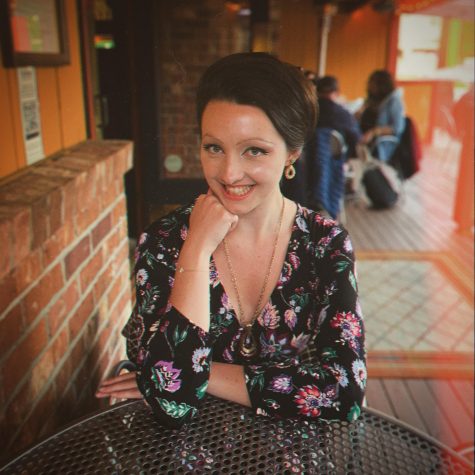How “The Shining” sequel measures up to its predecessor

Photo courtesy of Warner Bros.
Fans of “The Shining” have finally received closure for the nightmare that ensued 39 years ago.
Penned by renowned author Stephen King in 1977 and adapted for the screen by legendary director Stanley Kubrick in 1980, “The Shining” tells the story of Jack Torrence, who gets hired as a caretaker of the remote, mountaintop Overlook Hotel for the winter accompanied by his wife Wendy and young son Danny. But when Danny’s clairvoyance (known as the ability to “shine”) awakens a sinister energy, Jack slowly descends into a murderous madness under the influence of the hotel’s inherent evil.
In “The Shining,” reality mixes with the imaginary as the ghosts of 1920s-era party guests — and worse — haunt Wendy and Danny until they finally escape the horrors. With slow, tension-filled sequences, a blood-red color palette, surreal imagery and a plethora of unsettling sights, Kubrick’s iteration is truly what nightmares are made of.
On Nov. 8, director Mike Flanagan brought the second part of the story to theaters with “Doctor Sleep,” the official sequel published by King in 2013. The premise is simple: Led by a woman named Rose the Hat (Rebecca Ferguson), an evil gang called the Knot have learned to extend their own life expectancies by finding and murdering people who shine in order to inhale their “steam” for strength. Meanwhile, a now-adult Dan Torrence (Ewan McGregor) is living in New Hampshire where he telepathically meets 13-year-old Abra (Kyliegh Curran) and the two become friends. When the Knot catches wind of Abra’s powerful abilities, Dan tries to protect her in a race against time.
Bridging Two Worlds
For fans of “The Shining,” it is near-impossible to view “Doctor Sleep” through a different lens. In his article “Is Doctor Sleep a Faithful Sequel to The Shining? Here’s How the Movie Diverges From Its Sources” on Vulture, Brian Tallerico sheds light on this dilemma: “King’s book is a direct sequel to his 1977 novel The Shining, and most definitely not a direct sequel to the 1980 film directed by Stanley Kubrick, which King notoriously hated,” he writes, explaining that although Flanagan could’ve stuck true to the book alone, he decided to merge elements of both to avoid alienating fans of Kubrick’s film.
“Naturally, this led to a number of significant departures from both the source material and Kubrick’s universe.”
This raises the question: Should Flanagan have chosen between one or the other? Perhaps the story would’ve been more effective had it been left as a book. This would’ve allowed for a sequel while not infringing on Kubrick’s world; people could have read “Doctor Sleep” and used their imagination, or if they were content with “The Shining’s” ending, passed on it.
The Old and the New
As Rose the Hat, Ferguson didn’t produce the same level of fear present in “The Shining” — perhaps because her perfectly-made-up face, quirky fashion sense and occasional snarkiness are the kinds of characteristics which movies usually reserve for endearing villains (a la Cate Banchett’s portrayal of Hela in “Thor: Ragnarok”). The same could be said for the Knot as a whole, whose modern, Marvel-esque caricatures felt out of place in Kubrick’s environment. Had they been crafted as more subtle, believable menaces, they might have better fit the backdrop of the story.
Each threat in “The Shining” appeared in human form with no extraordinary abilities, which gave the film a deep-rooted, primal fear considering each scene of horror felt like a realistic scenario (or at least a plausible hallucination).
In “Doctor Sleep,” however, audiences are forced to accept that the vampirelike gang of near-immortals — reflective eyes and all — are real, no matter what. This makes it harder to suspend belief and, on a subconscious level, puts viewers at risk of losing some of that intrinsic, realistic fear.
“Doctor Sleep” has its eerie moments and graphic shockers — but it’s a different energy to the gradual insanity that viewers of “The Shining” are subjected to. When you see “Doctor Sleep” with a memory of the psychological torment that came before, it’s difficult to be frightened on the same level.
Look and Feel
The score incorporated Wendy Carlos’ haunting themes from 1980. But while it was wonderful to hear auditory callbacks to “The Shining” (such as the dread-inducing heartbeat motif), “Doctor Sleep” seemed to employ constant music in the background where its predecessor used it sparingly and methodically for maximum terror.
Where Kubrick featured long, continuous single shots of spacious settings for torturous tension, Flanagan often employs the modern tendency to jump through action with quick cuts. Where “The Shining” featured dialogue that could be applied to any era, “Doctor Sleep” often threw in occasional modern jargon which posed a distraction.
Perhaps the missing ingredient in “Doctor Sleep” is director Stanley Kubrick. Just as Peter Hyams’ “2010: The Year We Make Contact” (1984) was more fast-paced and mainstream than Kubrick’s adaptation of “2001: A Space Odyssey” (1968), the same can be said for “Doctor Sleep” versus “The Shining.” Although both sequels play tribute to Kubrick’s set design, they ultimately lack his eye for the truly uncanny.
Characters
McGregor and Curran were great as the telepathic duo who carried the story with their camaraderie.
A number of familiar faces from “The Shining” made appearances, too. One of the major acting highlights came with Carl Lumbly’s resurrection of the Overlook Hotel’s kindhearted chef Dick Hallorann, who first made Danny aware of his powers. In “Doctor Sleep,” he speaks to Danny in the form of a vision and plays the character to a T — right down to the grizzly voice of Scatman Crothers who originally embodied the role. It was also delightful to witness the return of Wendy Torrence in a series of scenes set in the early ‘80s. In emulating previous actress Shelly Duvall, Alexandra Essoe put careful effort into her mannerisms and the costume department took care of the rest.
An exception to the rest of the Knot’s shortcomings was Carl Struycken in the role of Grandpa Flick, who did a fantastic job utilizing leftover eeriness from previous roles of his such as the Giant on the 1990 television series “Twin Peaks.”
Channeling the Old
The most satisfying portion of “Doctor Sleep” occurs toward the very end, when the film’s look and feel dramatically switches gears to welcome a Kubrick-laden finale. As Dan and Abra seek refuge at the now-condemned Overlook Hotel, near-replica shots of the mountain drive from “The Shining’s” iconic opening credits are presented as a rendition of the foreboding theme music swells. But instead of the daytime journey, it is now dark and snowy en route to the hotel giving the setting an extra dose of doom. The sequence is as chilling as the weather appears, which makes me think that the film would’ve benefitted from more of these eerie callbacks.
As Dan walks through the hotel’s maze of hallways — quite literally revisiting his old haunts — it is pure magic. Set decorator Gene Serdena must be applauded for his attention to detail: The Overlook has officially been resurrected.
Old characters continue to make new cameos, most notably when Dan enters the ballroom and sits at the bar for a psychologically-charged exchange with his father (portrayed by Henry Thomas), who is now in the place of “The Shining’s” well-known bartender, Lloyd (Joe Turkel).
Eventually, Rose the Hat arrives, seemingly out of place against the legendary backdrop of the hotel: a feeling comparable to a celebrity visiting a historic movie set.
Considering that the closest the film got to “The Shining’s” level of terror was during scenes that evoked its look and feel, it makes me wonder if Flanagan should’ve instead taken that direction from the beginning. Despite “Doctor Sleep’s” occasional distractions, the film itself remains a well-acted and aesthetically-impressive tribute to the horror that started it all.







